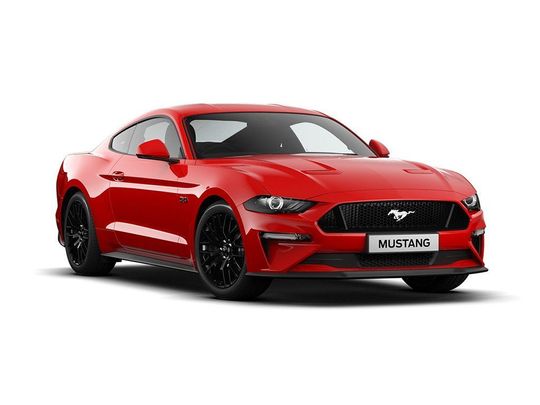
Larry was amazed at the originality and design of the 1969 Ford Cobra his first time seeing it. It was in a stunning condition, and still had its Raven Black paint finish. The car needed a new paint job but it was far more original than Larry imagined. This Cobra had been in Wisconsin its entire life and was rarely driven since new. The car's original owner had taken care of it, and Larry's plan to bring it to the next level was simple.
1969 Ford Cobra
This 1969 Ford Cobra car is a reference-quality muscle car and an investment grade vehicle. With two longtime owners and over $75,000 in investment, it's the highlight of any collection. National Muscle Cars now has the car for sale. You can choose from three configurations: R, RS, or base. This configuration allows you to remove the engine from the car and install the transaxle and transmission in the front.
This Ford 1969 Mustang is the most powerful. The four-speed Cobra transmission delivers 335 horsepower. It comes standard with competition suspension. Motor Trend tested the Cobra 4-speed and reported that it did the quarter-mile in 14.5 seconds. Ram Air, which is part of the Cobra's Ram Air system, kept the driver stable and didn't cause motion sickness. Although the suspension is capable to turn sharp corners, it can also cause problems.

1993 Ford Mustang SVT Cobra
This rare 1993 Ford Mustang SVT Cobra model was limited in production. It came equipped with a 5.0L V8 engine that is tuned to deliver more power. The car's factory rating was 235 horsepower, 280 pound-feet and torque. SVT tuning used Mustang GT performance as the base for their tuning. The car's cylinder heads were therefore replaced with GT40 pieces. The engine had other modifications, including a modified intake manifold as well as camshafts. It also had vented disk brakes.
The engine was powered a 302CI engine with 235 horsepower. It was fitted with GT-40 "High Flow" Cast Iron heads with larger valves and intake port designs. These heads were completed with GT-40 lower intake manifolds. A special tubular, cast aluminum upper intake was also fitted. The GT-40 manifold diverted air into a series of rectangular ports. H.O. also measured the Mustang Cobra’s throttle body. spec engines.
1999-2004 Ford Mustang SVT Cobra
SVT was offering a performance convertible, the Ford Mustang SVT Cobra, from 1999 to 2004. It used the same V6 engine, but was modified to improve its handling and performance. Cobra received an aluminum flywheel along with the V6 engine. It featured a modified suspension that allowed for individual damping rates. The suspension system included forged alloy wheels and 245/45ZR-17 BFGoodrich CompT/A tires. The car's distinctive sound began with a low growl at moderate cornering speeds, and then grew to a deep howling at maximum performance.
SVT engineers attempted to reduce weight by taking 50 pounds off the front of the car. Twenty of this weight came from the engine, while six pounds were removed from the Cobra's coil-on-plug direct ignition system. This Mustang SVT Cobra version has a 55/45 front-to-aft ratio that is approximately 1 foot less than the previous model. This means that the new SVT Cobra weighs 110 pounds less than the previous model.

2010 Ford Mustang Cobra Jet
The Ford Mustang Cobra Jet is a high-performance supercar that debuted in 2008. This supercar's fourth generation has many upgrades that help it reach such high-performance levels. Cobra Jet's 2010 model features a brand new fuel system. This system uses a return system in its trunk. Aluminum has been used to replace the intercooler coolant tank. This increases its capacity and resists pressure better. The supercar comes with fans and a "line lock", which disables the rear brakes when there is a burnout.
The 2010 Cobra Jet starts out as a basic white Mustang, and then goes to Watson Engineering, a specialist performance car shop, to install a cage and other modifications. It also receives a NHRA-legal rear seats delete panel, firewall, transmission access panels, and a firewall. The Cobra Jet logo and performance name are given to the vehicle after it is returned to AAI. The Cobra Jet has a modified engine and suspension to deliver a greater horsepower than its V6 counterpart.
FAQ
What qualifications do you need to be a mechanic?
A series of exams is necessary to become a mechanic. These include:
-
A general knowledge assessment
-
A practical examination
-
An apprenticeship test
These tests will ensure you are familiar with the fundamental concepts of mechanics and physics before starting to work as a mechanic.
Once you've passed these tests, you'll be eligible to work as a mechanic. But, you will still need an apprenticeship. This will involve training in your trade.
To learn all there is to know about fixing vehicles, you will need workshops and classes. Additionally, you will need to work with experienced mechanics.
To be a successful mechanic, you will need to have a high degree of concentration and attention. Vehicle repairs require you to be very attentive.
To become a successful mechanic you'll need patience. If you don’t love to follow instructions, this may not the right career path.
You could make a great career out of your love for cars and the work that goes into fixing them.
What are the requirements of an automotive technician?
You must have graduated high school or GED, with excellent English and math grades. You must also be able to read, and write. You will need to pass a written test and then go through a series of practical exams before being allowed to start work.
What information do I need about car mechanics
You don't need to know anything about cars to work as an auto mechanic. You only need to know how to fix them. It's why many people begin to fix things by fitting brake pads or changing tires.
You'll need the ability to read and understand diagrams and to follow simple rules of good practise. You will also need to understand how parts should be replaced or repaired.
It is important to understand that vehicle repairs should only be attempted by those who have received the proper training. This is especially true when you are dealing with costly components like engines and transmissions.
Even though you don't need to be an expert on cars, it is important to understand the fundamentals of mechanical engineering and physical physics. This will include understanding the basic principles of engine operation and brake function.
It is also important to remember that you will need to be able to handle many situations. You might be required to work on a vehicle that was involved in an accident. You will also need to be able to deal with accidents and breakdowns.
Finally, you must be willing to learn new skills quickly. In order to be able diagnose and fix problems, you will also need to know how to do simple maintenance tasks such tightening bolts.
What is the distinction between a mechanic or an automotive technician?
These two jobs are very similar but not identical. An automotive technician maintains cars, while a mechanic repairs them.
A mechanic must be skilled in manual dexterity and able to complete simple tasks quickly. A mechanic must be able diagnose and fix problems quickly and accurately.
An automotive technician needs to be more technically skilled than a mechanic. They must be capable of reading blueprints and using tools such as drills, wrenches, etc.
They must also be able perform complex procedures safely. They should also be familiarized with the different types of engines as well as electrical systems.
They should also be able understand how different parts interact.
A mechanic typically earns less than an automotive technician. But there are many opportunities for both jobs.
Statistics
- 52% of Mechanics in the United States think their salaries are enough for the cost of living in their area. (indeed.com)
- There were 749,900 jobs available for automotive service technicians and mechanics in 2016, which is expected to grow by six percent through 2026. (jobhero.com)
- The U.S. Bureau of Labor Statistics (BLS) reports that the job outlook for automotive service technicians and mechanics is expected to decline by 4% from 2019 to 2029. (indeed.com)
External Links
How To
How to properly diagnose your car for repair
Before you can determine if your car requires repairs, it's important to first analyze the symptoms. Follow these steps to properly diagnose your vehicle.
-
Check engine lights. The dashboard light indicators, including the engine light, oil pressure gauge, battery light indicator, coolant temperature gauge and RPM gauge, should be checked. If any of these indicators have been flashing continuously for several days it could mean that there is something wrong with your vehicle.
-
Take a look at the treads. If the tires are worn out, they could cause problems with handling and braking. The treads of the wheels should be inspected as well. They should look clean and be smooth. It is best to take off the wheels and remove them. You can check the tread wear with a flashlight.
-
Check the level of brake fluid. You must keep track on the level of brake fluid in your vehicle. This will ensure your brakes function properly. Low brake fluid levels can cause brake failure when you apply pressure.
-
The suspension system should be tested. It is common for vehicles to have a suspension system which absorbs shocks or vibrations. It gives you better control and allows for smoother accelerations and decelerations. Your vehicle might feel wobbly, or shake uncontrollably if it has a bad suspension. To test whether your vehicle has a suspension issue, try putting weight on the front or rear axle and observe the movement.
-
Examine the steering column. The steering columns are what connect the steering knob to the rest. Accidents often damage steering columns. You should replace your steering column if it feels loose or unstable.
-
Pay close attention to the exhaust tube. The exhaust pipes transport gases from the combustion chamber to outside. Exhaust pipes that are cracked or leaking can allow harmful fumes to enter your cabin. If your tailpipe bends, it is important to fix it immediately.
-
Take a look at the underside of your hood. To check for unusualities, look under the hood. There could be fluid leaking from your engine. In addition, if you notice an unusual smell coming from your engine compartment, you should contact a professional technician.
-
You should inspect your air filter. The outside environment can collect dust and other debris in your vehicle's air filters. A dirty filter can lead to a poor vehicle's performance. Replace your air filter regularly.
-
Check the fan belt. The fan belt that connects your vehicle to the transmission is called the engine fan belt. If the fan belt is damaged, the engine won’t turn. It is very easy to replace your belt. All you need to replace the belt is a screwdriver with pliers.
-
The radiator hose and hoses should be checked. The radiator hose transports water from radiator to engine. If it becomes cracked or damaged, it can leak hot liquid onto the engine. The hose can be repaired with a pair or needle-nosepliers, and a wire brush.
-
Make sure you have the windshield wipers checked. Windshield wipers use electricity to wipe away rain and snow. If they stop working, streaks could be left on your glass. Simply change the washer oil to fix the problem.
-
You should inspect the cables. The battery cables supply power to your car's electrical systems. Before you change batteries, disconnect the positive cable. Failure to do so can damage your alternator.
-
You should check the headlights. Headlights help you see the road ahead. If they don't work properly, it can cause poor visibility. You can check the bulbs to make sure they aren't burned out.
-
Always check your lights. The lights are there to warn other drivers if they approach you at night. You could be distracted and cause an accident if one does not work.
-
You should inspect your brakes. Brakes slow down your vehicle before a collision. You could lose control of the car and cause a crash if they don't work properly.
-
Change your oil. Your engine will stay lubricated by the oil. It protects metal parts and prevents them from wearing too quickly. It is recommended that you change your oil at least once per month.